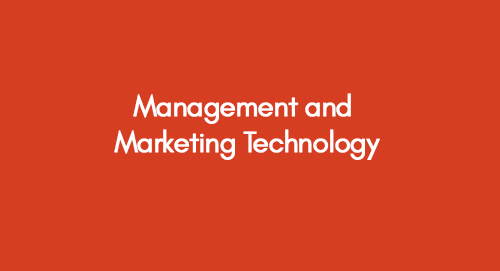
Managing Across Cultures Assessment
February 27, 2021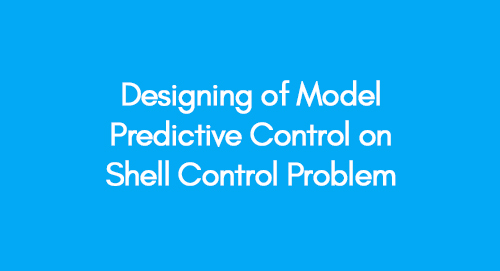
Sustainable Architecture
February 27, 2021Telecommunications technology has now become a need of the world and it almost touches every aspect of our lives. It affects the way we do our business, the way we govern ourselves, the way we keep in touch with those we love, and the way we build the collective human experiences we call culture. Networks are connected and the technologies are used in nearly every region of the world.
In telecom industry the technology innovation the main driving force to achieve sustainability and to remain competitive in today’s tough industrial competition. Many industries in the telecommunication industries have evolved recently in the UL, and all the top players send huge sums of money to develop latest technologies. The market opportunities are analyzed and the innovative products are developed in order to lead in the respective fields [1]. However, the continues developments of late has made it increasing difficult for the companies to identify the opportunities which are risk free and would enhance the business prospects, and which would be appreciated by the user of multi discipline/segments.
Viewing the market situation from the technological perspective, the telecom industry can be considered as the global industry due to continue increase of users worldwide. Even the underdeveloped countries are progressing in the field of telecommunications and almost in every region and the latest methods of the networking are being used. The wireless technology is still being developed as the much progress has been reported in the last few years [3-4]. While the industrial companies such as Vodafone and British telecommunications benefitted from the huge industrial growth, there are many challenges that these companies face in order to manage the increasing demands and high quality engineering and maintenance. Failing to manage the technology and associated services would mean that the company’s brand name would fade and the gap will be created to fill, and the market shares will be quickly filled by the competitors of the same industry.
The innovative technology management is therefore extremely important, and we will be discussing how one of the leading companies, Vodafone, is actually managing the company’s stakes. From the research conducted, it has been acknowledged that the company understands that the users are important actors in innovation projects. The market success of new products and services depends highly on addressing customer requirements without overloading them with too many new features and technologies. The technology innovation is being undertaken in the following n two key respects:
Research is being conducted to develop state of the art products and services, however the business model developments is yet to be prioritized
Much works is being done to peruse on the company’s role in the innovation in the field of telecommunication
Competition between the telecom industries is increasing day by day as the numbers of consumer are increasing very rapidly [2]. This competition requires the company to focus on various aspects of the performance such as skills development, adapting strategies, arrangement of the company’s organizational structure. Furthermore, The Company is putting much effort to develop processes which would integrate the dispersed information/opportunities to achieve a name in the global innovation development. Vodafone has known to successfully develop and manage excellent relations with various classes of consumers and technology clusters. The functional forecasting planning, organizing, commanding, coordinating and controlling is managed for successful development of the business in the long term.
In the last couple of decades, the telecommunication industry has made great leaps forward. Vodafone is one of them; they are aggressively perusing the development of the 3G technology. The latest the 3G technology is known to transfer the voice and other electronic data at higher speeds without many intervals. The fast internet speeds allow the luxury of downloading and uploading data to the users (such as videos, music, television etc), and Vodafone has been successfully able to provide these facilities to its huge group of clients/customers. In order to become the market leader, Vodafone initiated to develop latest technologies such as Long Term Evolution (LTE) and Femtocells.
Vodafone’s Femtocells
In telecommunication industry, a base station which is run with minimum power and specifically designed for home or small capacity business use is called Femtocells. Femtocells are especially for indoors it offers improved coverage and capacity. The users are provided with the enhanced coverage and high quality of voice and data transfer, while consuming minimum battery/power.
Vodafone look at femtocells in two ways. Vodafone seeks a lot of opportunities on the retail side. In order to increase the number of customers, the company is targeting both the commercial and residential segments of customers/consumers. The traffic of networking data is increasing enormously, with higher growth levels in quantity of users and locations, which has presented various management issues and challenges. This has resulted in adaptation of the tailored cohesive strategies such as capacity management; specifically on the already matured market of technology.
Vodafone’s LTE – Long Term Evolution
Long Term Evolution, which termed as LTE is an evolutionary from of the GSM and UMTS platform. It is a wireless technology for data transformations and communications. The objective of the LTE is to enhance the capacity as well as the speed of the wireless networking. It utilizes the state of the art Digital Signal Processing methods, termed as LTE, and various other modules to transfer the data in order to achieve the higher speeds and networking performance.
Vodafone successfully trialed the technology of H.S.P.A plus 16-M.b.p.s 64-Q.A.M and H.S.P.A plus 20-Mbps M.I.M.O in January and February 2009, and it has opened the way for future commercial deployment. They are presently examining ways to configure the optimum methods of physical and equipment placements to minimize both OPEX and CAPEX via enhancements in infrastructure engineering such as introduction of remote-radio.
It has also been reported that Vodafone is actively participating in the global LTE development. The company has developed influential relations with companies such as Verizon and China Mobile, and they have successfully established production of RFIs after successfully completing the field trials of LTE. The Vodafone associations with these companies have produced positive outcomes in terms of technical equipment development e.g. chipsets and devices at lower prices, and volume increase. This has resulted in an effective penetration in the global market of telecommunication [7]. Thorough provision of consistent trouble shooting and solutions, the company is putting much emphasis on developing the LTE systems which has the capacity to enhance the global roaming. Efforts are also being made to design tools which is expected to provide worldwide mobile broadband solution.
The company is also providing benefits to the small business. They have partnered with the Safaricom to develop system which can wire the electric money transfer at lower costs for small businesses. Opportunities in this sector are huge as various mobile companies around the globe have penetrated in the field of mobile money transfers. Vodafone has set up this business in the name of M_PESA in coordination with the Financial Deepening Challenge Fund, which was established in UK to provide support in international developments
Therefore it can be concluded that although the Vodafone is not the official leader in the field of Telecommunication industry, it is taking the influential steps in the innovative technology management to attain good share/pie of the industry. The company has shown flexibility in the management techniques and adaptation with respect to technological advancements. The company has identified the key drivers which are changing the consumer needs and they are developing to accommodate with both hard and soft system changes. The ability to functionally forecast the market need and putting up management plans according has been the key to their success. Coordination with other global companies, organizational management, opportunity detection and directing the technical advancements to attaining maximum benefits are other parameters in which the company has performed exceptionally in the recent past
Future of Vodafone on the basis of Technology
According to the worldwide estimated, there will be around 6.50 billion telecommunication devices around the globe. Approximately more that 500 million internet users already exist, in one way or another and this figure is expected to rise in the near future, as many businesses are shifting to the online control systems. Having analyzed these numbers, Vodafone is set to up its investment by 50% this year with plans to spend almost £1bn on the network. 4G services will be launched late summer by the network, who promises the capabilities to provide 98% of the UK with coverage by 2015 [5].
Vodafone gives the investment plan of £7bn to streamline the company’s overall operation in Europe. This is to ensure that services/operation is not deteriorated in the said region, which will avoid the risk of company’s downside. A good share of the budget is also being used to invest in strategic area in order to expand the business in various parts of the world. The company has also planned to reserve a budget of 19bn pounds in the fixed capital for the next couple years. Extremely fast mobile services is the driving force in the new emerging market, therefore it has been planned to reserve 1.5bn pounds for the services streamlining and development [5]. This budgeting plan shows that the company is expanding and streamlining the operations and services. The investment plan on the fixed capital shows the growth of the company’s assets is the near future
Vodafone taking measures to control and manage the signaling traffic jams in already concentrated data highways in the present and also in the future as the user of mobile phones are increasing day by day [8]. New routes for better data transfers are being developed to enhance the communicational and networking performance. The introduction of integrated products, research into the data path ways, and the ability to successfully manage the major risks/threats of the market will help the company to succeed in the near future.
The model theoretical model applied by the model is similar to the ones proposed by Henri Fayol, which has been drawn in the following figure;

Figure-1: Management Model Applied to Vodafone (drawn using United Paint, 2013)
Section 2: Apple and RIM Marketing Strategies
The last few decades has seen an outstanding growth in the cell phone industry, which has consequently developed fierce competition amongst various cell phone makers. The main share holders of this billion dollar industry are Samsung, HTC, Nokia, LG, Apple and Research in Motion (RIM). This section of the report presents the comparison and critical evaluation of the marketing strategies for Apple’s mobile products and RIM’s Blackberry products. The smart phones introduction in the market has seen exclusive completion of between Apple and RIM.
Apple’s mobile products marketing strategy
The Apples mobile product knows an iPhone was introduced in the market in the year 2007. Since apple’s mobile phone instruction, Apple has been able to successfully market the product’s main differential which are as below;
- Multi taking all in one smart communication device
- Revolutionized extended touch screen
- Huge capacity for storage
- Customizable and easy to use software application
- Production of the reliable Apple brand
The marketing strategy is considered to be well planned and focuses on the following influential factors;
- Multi distribution channels
- Exceptional proposition for sales, including customization, connectivity, innovative technology application etc.
- Competitive price
By year 2012, Apple has achieved outstanding results though the focused marketing strategy. The company has established an exclusive feel of their products and brand through effective communicational plan/strategy through introducing only one product/device every year with variation in memory capacities [11]. The brand also developed customer faith through limiting the product sale to Apple’s online and other stores and limited outlets of service providers.
The Apple’s success in the recent years has been due to effective management and planning. Much success has been possible due to the role of branding, as the Apple has generated a huge set of followers and client base, due to the products durability and product lifecycle. Apple products are considered to be one of the best worldwide by most of the consumers. The successful branding and exclusive outlooks, customer support network and technological advancements through research and development have all contributed in this success.
Therefore, it can be concluded that the marketing mix model of McCarthy in 1960, which proposed a 4P model which included the Product, Price, Promotion and Place to target the customers, has been successfully adapted by iPhone, as shown in the figure below;
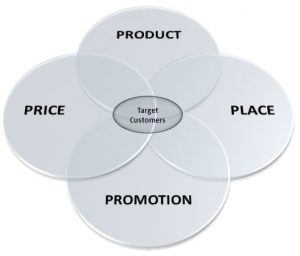
Figure-2: 4P Model (Source: McCarthy, 1960)
RIM’s Blackberry products marketing strategy
Research in Motion BlackBerry first introduced the smart phones in the year of 2003, which was considered to be the first smart phone from a recognized company in the commercial market. RIM Blackberry, which is now in the maturity of its life-cycle, has a different marketing strategy. From the product modeling point of view, the company has developed more than 37 moles since the year 2007, which in direct contrast with Apple. The company accepted to rattail the products through RIM stores, service provider stores, dealer stores and through super stores such as Tesco. The company publicity launches have also been limited, such as the customer introduction events.
In the early age of mobile phone introduction, the various companies’ main focus was on the price and the design with respect to the user friendly customer interference. In the early last decade, the trend diverted to the application developments, especially for application which could provide enhanced connectivity [15]. RIM introduced software and hardware applications which became extremely popular in business users (RIM enterprise server). Blackberry was the first company to introduce such system, and therefore the company gained much success and it became the market leader in the smart mobile phones.
RIM’s Blackberry products were launched with the effective market segmentation when the models with relatively low prices were introduced, however the key driving force of the RIM’s branding had been to address the needs of business user. The branding strategy saw a downfall between the years 2009-2011 user-domains changed in the last five years [14]. The converging of the business and consumer changed due to the fall of phone service prices, which enabled users from every sector to purchase the innovative phones, which offer application stores, touch screens and higher processing speed [12].
The Porter’s five forces model can which is given below can be reviewed to analyze the fierce completion RIM now faces in the market;
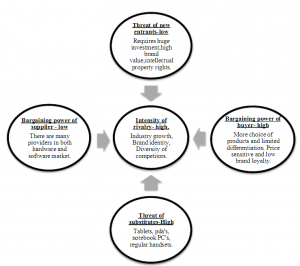
Figure-3: Porter’s 5 forces applied to (Source: Porter, 2008). The five competitive forces that shape strategy.
Comparison
Due to the shift in the user requirements, Apple gain much success, and today up to 40% of business users use iPhones. The figure below represents this change graphically;
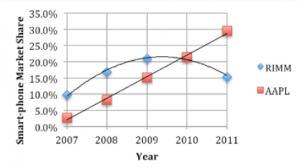
Figure-4: Financial Comparative of RIM and Apple (A. Books, 2012)
The segmental behavior is characterized with respect to age, occupation, gender and income. The iPhone is considered to rank amongst the best for usability, access to applications, brand perception/referral, business and hardware use, music and camera facilities. The disliked for the iPhone brand mobile products are over the short battery, poor network coverage, non durability, costs and outlook functions. Whereas Blackberry is considered to be ranked high for business use, Free BBM use, usability and keyboard, and durability. The drawbacks amongst the major segments have been highlighted as poor battery, fewer application, low quality camera, old fashioned design, poor durability and antenna issues [14].
The product life cycle is defines the different stages product goes through during its life time. The product is first developed considering the market trend and requirements, and also the branding strategy. The developed product is introduced in the market though strategic marketing strategy and the product growth, maturity, and decline is strictly monitored. The correct marketing mix addresses all these strategies to ensure maximum productivity of the product.
Blackberry in this regard revolutionized the market. The key to blackberry’s marketing mix and life cycle has based upon the product development, pricing strategies, marketing through tailored campaigns and exclusive offers. In an effort to achieve considerable business success, the company adopted resource based model and Porter’s strategy of three general positioning frameworks which are focus, differentiation and price leadership [9-10].
Since the downfall in the market share of Blackberry, much effort is being put to enhance the product depth establishing features in accordance with the user requirements of today. The new product is promoted through the internet and viral marketing and social media channels. During the maturity stage of the product life cycle, the company sets up pricing strategies to ensure the product remains for longer run in the market. Exclusive offers are provided to the customers during the decline stage of the product
iPhone on the other hand work through the key network providers, namely Verizon, Sprint and AT &T. The company follows a kind of straight product price structure, which is to offer standardized price structure during all the lifecycle stages of the product. Only limited discounts are offered for the declining products and/or new releases and versions. Products with lower internal capacity (such as iPhone 8gb) have seen discounts with various distributors. However, iPhone provided the added on services as the key products marketing mix, such as free items from the apple store and/or iCloud, incoming technologies and upgrades etc. The social media and internet marketing are two major promotion platforms used by Apple. The table below shows the comparative of advertising mission, statements and budgets between Blackberry and iPhone
Table-1; Comparison of Marketing strategies
BlackBerry | iPhone
|
Provision of information based on persuasion to business customers for functionality of its products | Provision of information based on persuasion to business customers for functionality and features of its products |
Effort in progress to extend brand awareness in younger age segment with new slogans, segmentation, branding and new models | Added on features are such as iCloud and Siri are presented. Targeting both young and business client |
Be Bold, I am about action not distraction, we need tools not toys, etc | The best decision you will ever make |
Losing market share, increasing marketing budget. | Leading phone industry, increasing the advertising budget |
References
[1] R Boutellier, O. Gassman, M. vonZedwitz, M., Managing Global Innovation, Springer Publishing, 1999
[2] Y Doz, J. Santos, and P. Williamson, From Global to Metanational: How companies win in the knowledge economy, HBS Press, 2001.
[3] G. Zysman and H, Menkes, Wireless Mobile Communications at the Start of the 21st
Century, IEEE Communications Magazine, 2001, 110-116.
[4] M. H. Fallah and T.G. Lechler, Global innovation management in wireless communications industry. IAMOT 2003. Available online at: http://personal.stevens.edu/~hfallah/GLOBAL_INNOVATION_MANAGEMENT_IN_WIRELESS_COMMUNICATIONS_INDUSTRY.pdf [Accessed 14 December 2013]
[5] Vodafone Business Overview, Vodafone Group Plc Annual Report 2008. Available online at: http://www.vodafone.com/content/annualreport/annual_report08/downloads/vodafone_ar_business.pdf [Accessed 13 December 2013]
[6] Vodafone official Website. Available online at: Vodafone.co.uk. [Accessed 12 December 2013]
[7] V. Vaitheeswaran, “Something New Under the Sun”. Special report on Innovation, The Economist, October 13th 2007.
[8] Tom Kelly and Jonathan Littman (2001) “The Art of Innovation” Doubleday
[9] M.E. Porter, “The five competitive forces that shape strategy”, Harvard business review. January issue, 2008.
[10] M.E Porter, “Competitive Advantage”, 1st edition, 1985, Free Press, USA
[11] Apple inc., Form 10-K 2011 Annual report. Available online at: at:http://investor.apple.com/secfiling.cfm?filingID=1193125-11-282113&CIK=320193 [Accessed 06 December 2013]
[12] RIM ltd., Form 40-F Annual report 2012. [Online] Available at: http://www.rim.com/investors/documents/pdf/annual/2012rim_ar_40F.pdf[Accessed 12 December 2013]
[13] D. Lee, “RIM blackberry strategy may be risky” BBC [Online] Available at: http://www.bbc.co.uk/news/technology-17565566 [Accessed 13 December 2013]
[14] A. Brooks, S. Chaky, R. Pedroza, and S. Singleton, Marketing Management 205 - June 1, 2012.
[15] T.M Anderson, What You Need to Know About Smartphones 2.0. Kiplinger’s Personal Finance, 2009, 63, (11), pg.79.
Get 3+ Free Dissertation Topics within 24 hours?

















